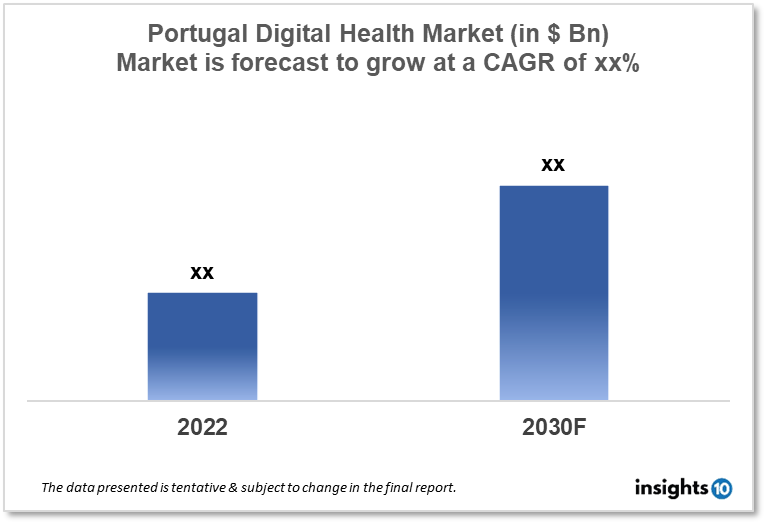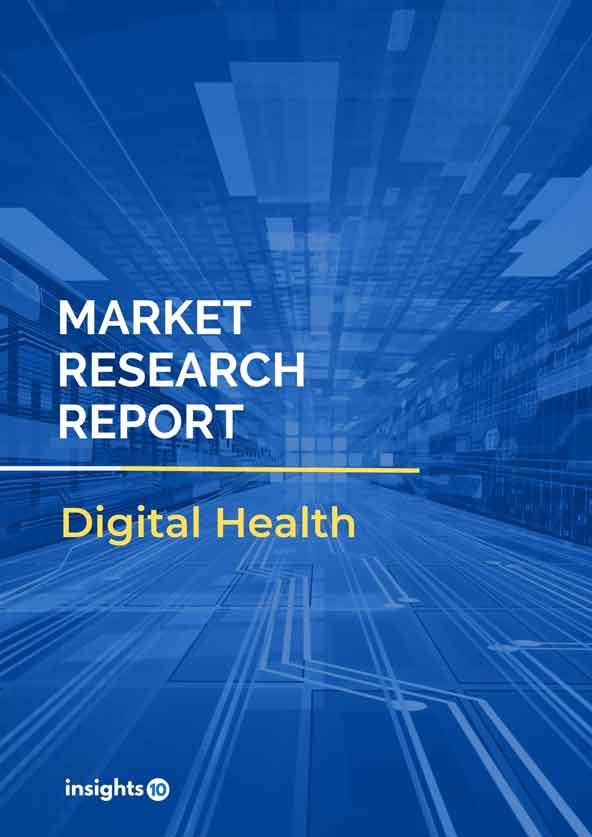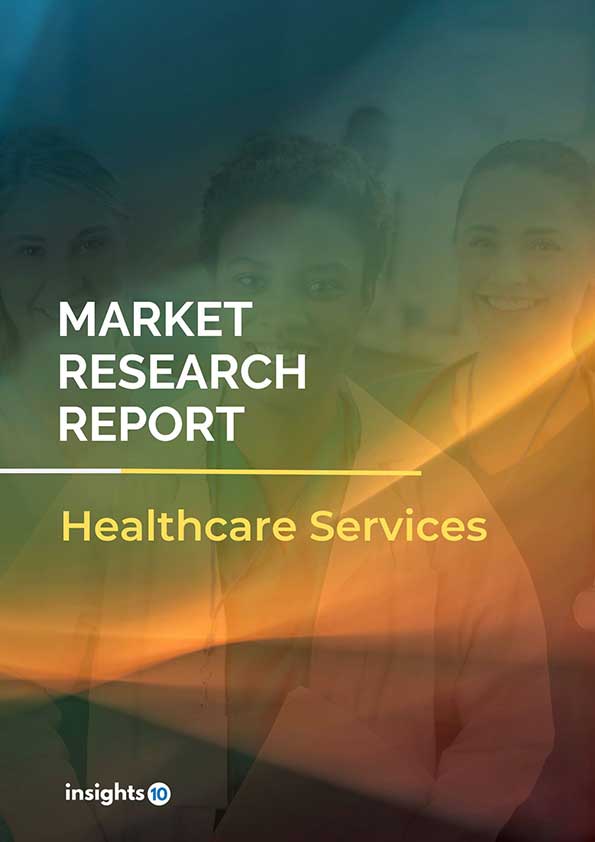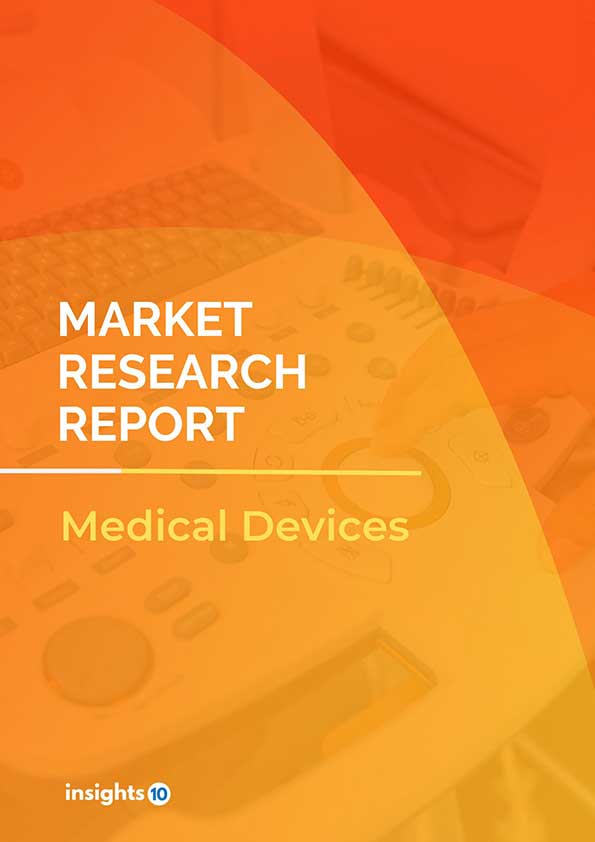Portugal Digital Health Market Analysis
The Portugal Digital Health market is projected to grow from $xxBn in 2022 to $xxBn by 2030, registering a CAGR xx% during the forecast period of 2022 - 2030. The market will be driven by increasing access to digital health technologies and reduced healthcare costs due to digitization. The market is segmented by solution, by deployment & by end-use. Some of the major players include SWORD Health, Knok & Novabase.
Buy Now

Portugal Digital Health Market Executive Summary
The Portugal Digital Health market is projected to grow from $xxBn in 2022 to $xxBn by 2030, registering a CAGR xx% during the forecast period of 2022 - 2030. Health spending increased by 12.2% in 2021, hitting 11.2% of GDP (0.7% point more than in 2020), the highest level in the available record that began in 2000.
In recent years, the digital health industry in Portugal has expanded, with a concentration on telemedicine and electronic health records. With the purpose of enhancing the efficiency and accessibility of healthcare services, the government has invested in the development and deployment of digital health systems. The total investment in digital health in Portugal, however, is not publicly disclosed.
Electronic health records (EHRs) are utilized by all primary care physicians and the majority of hospitals, and some interoperability across EHR systems has been accomplished. Investments coordinated by the Ministry of Health's Shared Services have been made to ensure that the data infrastructure utilizes shared unique patient identifiers that allow information to be recorded in the Portuguese Health Data Platform (Plataforma de Dados da Saúde).

Market Dynamics
Market Growth Drivers
The Portuguese Ministry of Health has devised a new strategy cantered on civilian communications. The effort intends to change the way individuals get information about health services and resources by boosting understanding of healthcare indicators and access to services via websites and mobile applications. The SNS Portal (Portal da Saúde) is at the foundation of a number of projects being developed by Portugal's national health service, the Serviço Nacional de Saúde (SNS). The portal mixes information on public healthcare with real-time data about physicians, nurses, and other health professionals, as well as programs aimed at professionals and people.
Market Restraints
The digital health market in Portugal confronts a number of problems, including a lack of digital infrastructure, a lack of standardization, privacy and security issues, a lack of healthcare provider engagement, and an investment shortage. Furthermore, the lack of regulation in the industry generates uncertainty for businesses and investors. These issues may operate as a barrier to the market's growth and development.
Competitive Landscape
Key Players
- SWORD Health (PRT): Digital therapeutics provider for physical rehabilitation. SWORD Phoenix is a technology created by SWORD Health that combines portable motion sensors and strong software to provide a cost-effective method to rehabilitation.
- Knok (PRT): Patient and doctor teleconsultation platform provider. It is a website where patients may arrange and book remote consultations with various medical professionals
- Novabase (PRT): This company provides digital solutions for the healthcare sector, including electronic health records, telemedicine, and health data analytics
- Kinematix (PRT): Have created a wearable gadget that can be hooked into your shoe and analyses your running style to provide tips for enhancing your activity
- Mediktor: This company provides digital triage solutions for hospitals and clinics, which help to improve patient flow and reduce waiting times
Healthcare Policies and Regulatory Landscape
The Ministry of Health is in charge of the general direction and coordination of the country's digital health activities. The National Health Service (NHS) is also involved in the design and delivery of digital health systems and services.
The National Strategy for the Health Information Ecosystem (ENESIS 2022) was established by SPMS, E.P.E. in conjunction with a variety of internal and external institutional and individual partners to the Ministry of Health during a three-year period from 2020 to 2022. ENESIS 2022 intended to foster the digital transformation of the Portuguese health sector by establishing the necessary circumstances for the growth of the Health Information Ecosystem (eSIS).
Reimbursement Scenario
In Portugal, reimbursement for digital health services is still in the works. The Portuguese National Health Service (NHS) is in charge of the compensation of healthcare services in Portugal, including digital health services. Currently, the NHS does not cover all digital health services, and reimbursement is frequently assessed on a case-by-case basis.
1. Executive Summary
1.1 Digital Health Overview
1.2 Global Scenario
1.3 Country Overview
1.4 Healthcare Scenario in Country
1.5 Digital Health Policy in Country
1.6 Recent Developments in the Country
2. Market Size and Forecasting
2.1 Market Size (With Excel and Methodology)
2.2 Market Segmentation (Check all Segments in Segmentation Section)
3. Market Dynamics
3.1 Market Drivers
3.2 Market Restraints
4. Competitive Landscape
4.1 Major Market Share
4.2 Key Company Profile (Check all Companies in the Summary Section)
4.2.1 Company
4.2.1.1 Overview
4.2.1.2 Product Applications and Services
4.2.1.3 Recent Developments
4.2.1.4 Partnerships Ecosystem
4.2.1.5 Financials (Based on Availability)
5. Reimbursement Scenario
5.1 Reimbursement Regulation
5.2 Reimbursement Process for Diagnosis
5.3 Reimbursement Process for Treatment
6. Methodology and Scope
Digital Health Market Segmentation
The Digital Health Market is segmented as mentioned below:
By Solution (Revenue, USD Billion):
- Software
- Services
By Deployment (Revenue, USD Billion):
- Cloud-based
- On-premises
By End-use (Revenue, USD Billion):
- Diagnostic Centres
- Healthcare Payers
- Healthcare Research Centres
- Hospitals & Clinics
- Nursing Care Centres
- Others
Insights10 will provide you with the reports within 10 key parameters which are:
- Market Overview
- Market Growth Drivers & Restraints
- Epidemiology of Disease Type
- Market Segmentation
- Market Share
- Competitive Landscape
- Key Company Profiles
- Healthcare Policies & Regulatory Framework
- Reimbursement Scenario
- Factors Driving Future Growth
Based on our many years of experience, we believe that these are the parameters that are critical to decision-making for business stakeholders. Our focused approach to developing reports focused on 10 key parameters, enabled us to arrive at the name “Insights10”.

Stage I: Market Data Collection
Primary Interviews: We have developed a network of experts, freelancers, and researchers across countries through which we engage with local experts to gather key data points and assumptions about each market. We also engage regularly with some of the best market research agencies such as Atheneum, GuidePoint, GLG, etc. to conduct surveys and interviews, and build intelligence. We have language translators as a part of our team, who between them can cover 30+ languages allowing us to extract better local insights.
Secondary Data Collection: We have developed strong expertise and experience in secondary data collection methods for developing unique data sets and research material. We gather data from multiple reliable sources to maintain a high level of accuracy and consistency. The market data is analyzed and forecasted using appropriate statistical and coherent models. The report offers an overall analysis of the market size, growth, and market share as well as a segment-level analysis of the specific market. Our report includes precise, to-the-point information related to the overall market, competition, growth drivers, challenges, regulatory updates, and competition.
Data Sources: We have access to multiple highly reliable free and subscription data sources. We have many years of experience to understand which sources are more dependable for what and which to prefer for the reliable and latest information. The key sources of information include the following, but are not limited to:

Stage II: Market Data Analysis and Statistical Model
Market Trends: We generally look at macro parameters and micro indicators. The macro parameters include changes in government policies, demand and supply of the market, government intervention programs, and major market share. The micro indicators are GDP growth, market size, market volume, etc. We also understand nuances specific to each country like the US, Canada, India, Germany, etc., and have worked across 60+ countries and hence not only understand global trends but how these differ by country, how payment models, market structure, cultural parameters, etc. differ in each country.
Market Sizing and Analysis: Our expert data analytics team has created various market forecast models by employing the top-down approach i.e. starting with the large overall market and segmenting different areas and the bottom-up approach i.e. starting with population and epidemiology and rolling up based on spend, etc., estimating the size of the market, and distributing among the geographic and/or product segments.
The top-down approach is mainly used for new product forecasting and the bottom-up approach is used for demand estimation of any product for different countries summed up to form the total market. We are able to round off insights and build stronger forecasts because we always do both these methods and triangulate the final numbers.
The study on the market covers the analysis of the leading geographies such as Asia-Pacific, Africa, Europe, Middle East, North America, and Latin America for the period of 2022 to 2030. The qualitative analysis covers the industry landscape and trends, market opportunities, competitive landscape, and policy and regulatory scenario, and the quantitative analysis covers different market estimates and forecasts.
Data Triangulation & Validation:
Data triangulation of various sources and results of the research are carried out by benchmarking with reliable sources such as industry statistics, statistical databases, and company-level averages, etc.
We make sure to finalize the numbers in alignment with the market research. Firstly, our internal experts ensure thorough validation and checking to ensure accurate and precise analysis and then validation is also done using a multiple-data analysis model. Two-level validation is done and entails the finalization of the report scope and the way of representation pattern.
(1).png)
Stage III: Interpretation and Presentation
Analysis & Interpretation: The information gathered is then analyzed and synthesized. The second series of interviews are done if necessary to check and validate. The future opportunities are analyzed by understanding product commercialization and many other factors. It also comprises the analysis of data discrepancies observed across various data sources. Information procured from secondary and primary results is then, interpreted by considering the following parameters: (a partial list)
- Establishing market drivers and trends
- Analyzing the regulatory landscape to understand future growth
- Market Segment based analysis to obtain revenue/volume
- Analyzing current needs and determining penetration to estimate the market
Insights: Our reports deliver actionable insights backed with supporting facts and figures to assist you in achieving exemplary growth. Our in-depth analyses are interspersed with relevant insights and statistics to offer an executive-level view of a given market. The description helps in correlating many minor factors affecting the market and their impact on the different segments within the market.
Data curated from the analysis and interpretation are drawn to portray all in one consolidated report.
Presentation & Reporting: The market research report is presented in different forms such as charts by using a scientific approach for easy understanding. Historic, current, and future analysis is provided for each market in terms of both value and volume. The size of the market is interpreted in the US Dollar value and the respective unit, based on the product, for volume consumption.
The foreign exchange rates are calculated on the respective dates and for the respective regions covered in the study.
To request a free sample copy of this report, please complete the form below.
We value your inquiry and offer free customization with every report to fulfil your exact research needs.
This report addresses
- Intelligent insights to take informed business decisions
- Qualitative, acute and result oriented market analysis
- Market size and forecasts from 2022 to 2030
- Opportunities for expansion and in-depth market analysis
- Segmentation and regional revenue forecasts
- Analysis of the market share and competitive landscape
- Strategic Recommendations to chart future course of action
- Comprehensive Market Research Report in PDF and PPT formats
Need more?
- Ask our analyst how this study was put together to learn more
- Discuss additional requirements as part of the free customisation
- Add more countries or regions to the scope
- Get answers to specific business questions
- Develop the business case to launch the product
- Find out how this report may influence your business revenue




